Indistylemen
Men’s Dress Shirt Style Guide – How To Select Fit, Collar, Cuffs & Details
- Get link
- X
- Other Apps
There are a shocking number of styling options for men’s dress shirts. Even though that means it should enable every man to find a great fit and style that works for their needs, it can be daunting to wade through all the details.
Having previously covered shirting materials and hallmarks of a quality shirt, it’s now time to focus more closely on the style options of a dress shirt. We will take a deep dive into the options, including achieving the proper fit and selecting each detail from buttons to plackets.
How to Find the Proper Fit of a Shirt
Arguably fit is the most striking and important feature of a shirt; if your shirt is ill-fitting, none of the details will matter.
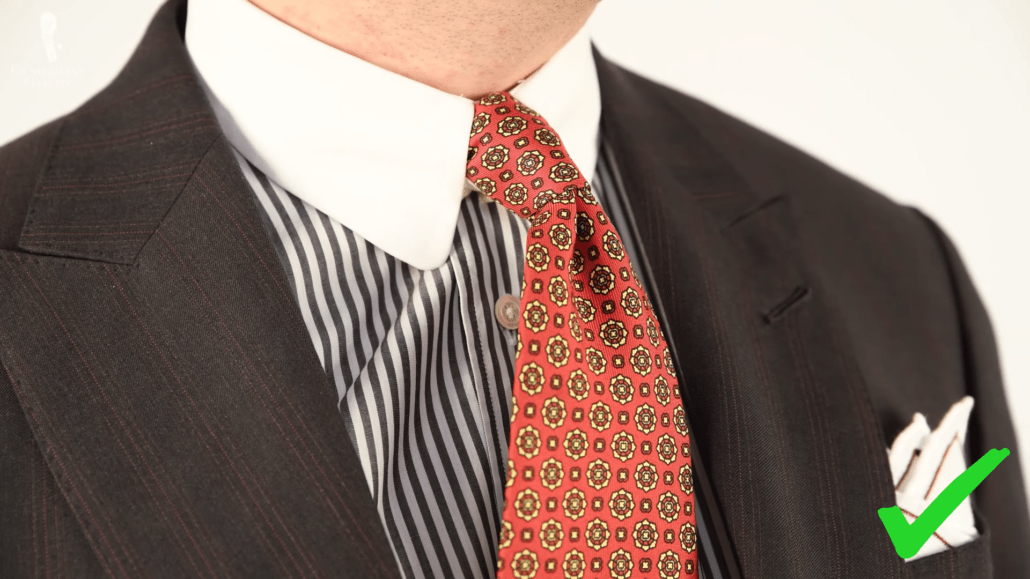
Dress shirts are the base of a classic wardrobe
Before getting started, it is important to note that unlike other garments like jackets and pants, achieving a good fit with a dress shirt is best accomplished by purchasing the right shirt from the outset. Alterations are pricey relative to the cost of a shirt, so if you have fit challenges, it’s best to have your shirts produced made-to-measure or bespoke. These options are far less expensive for shirts, so even men with modest budgets will find an MTM or bespoke shirt manufacturer in their budget range.
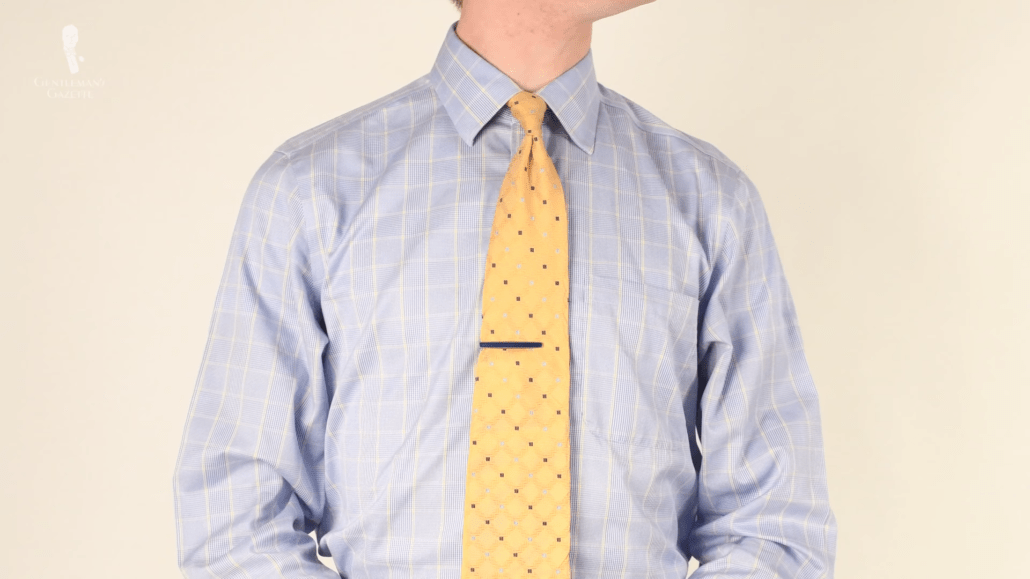
Preston Schlueter wearing a dress shirt and tie minus the jacket
No matter what option you chose, the fit and the style options you choose the final fit will have a huge impact on the overall look. People often talk about the “perfect fit” as if it was one objective standard, but in fact, it contains many subjective elements. The first step is to determine what fit and look you like. Though it varies by manufacturer, the most typical choices are: Classic Fit, Slim Fit, Modern/Contemporary Fit, and Skinny Fit.
Dress Shirt Fit Option #1: The Classic Fit
The classic fit is likely what your father and grandfather wore. It is characterized by a traditional tailoring silhouette, allowing a comfortable fit with a boxier shape, with plenty of fabric in the sleeves and the body. It provides great mobility and features two pleats on the back, usually located near the yoke.
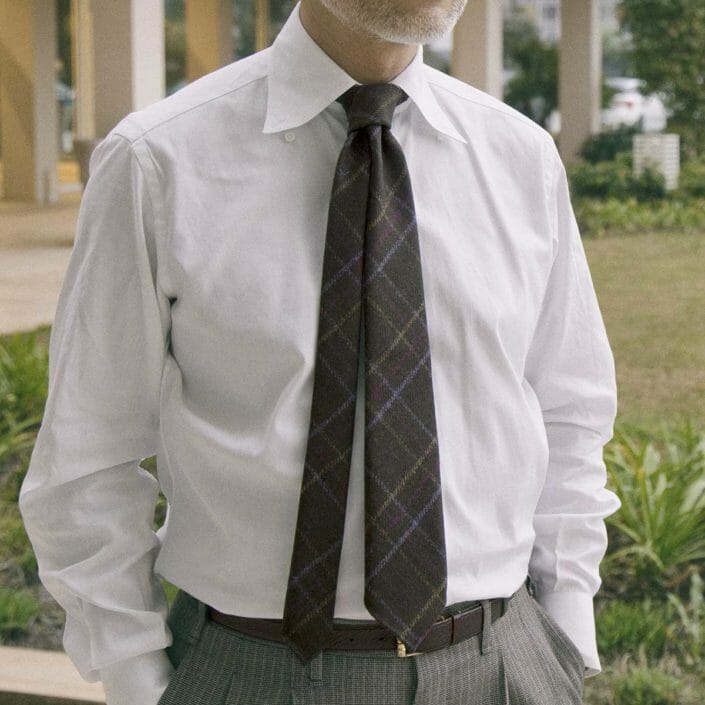
Loose-fitting dress shirt
Since men in the mid-20th century would never wear a shirt without a jacket (or even a vest), the main priority was comfort. This is the go-to choice for those with a more classic style who favor comfort over fashion.
If you regularly wear shirts with a jacket, this is probably the best fit for you because it is the most comfortable. It can be overwhelming on thinner frames, but if you have a rounder stomach, this is the most comfortable and most flattering style for your body shape.
Dress Shirt Fit Option #2: Slim Fit
Throughout history, young men have often tried to differentiate their look from their parent’s generation. At the same time, it has become socially acceptable to wear a dress shirt without a jacket, and therefore the look and fit of the shirt itself has become more important.
While a slim fit shirt is less comfortable and often more constricting in your movement, it is a lot more fashionable because it eliminates excess fabric. A slim fit shirt typically has an accentuated back with darts and a high armhole stance allowing for a shaped look that sits closer to the body, without being skin tight.
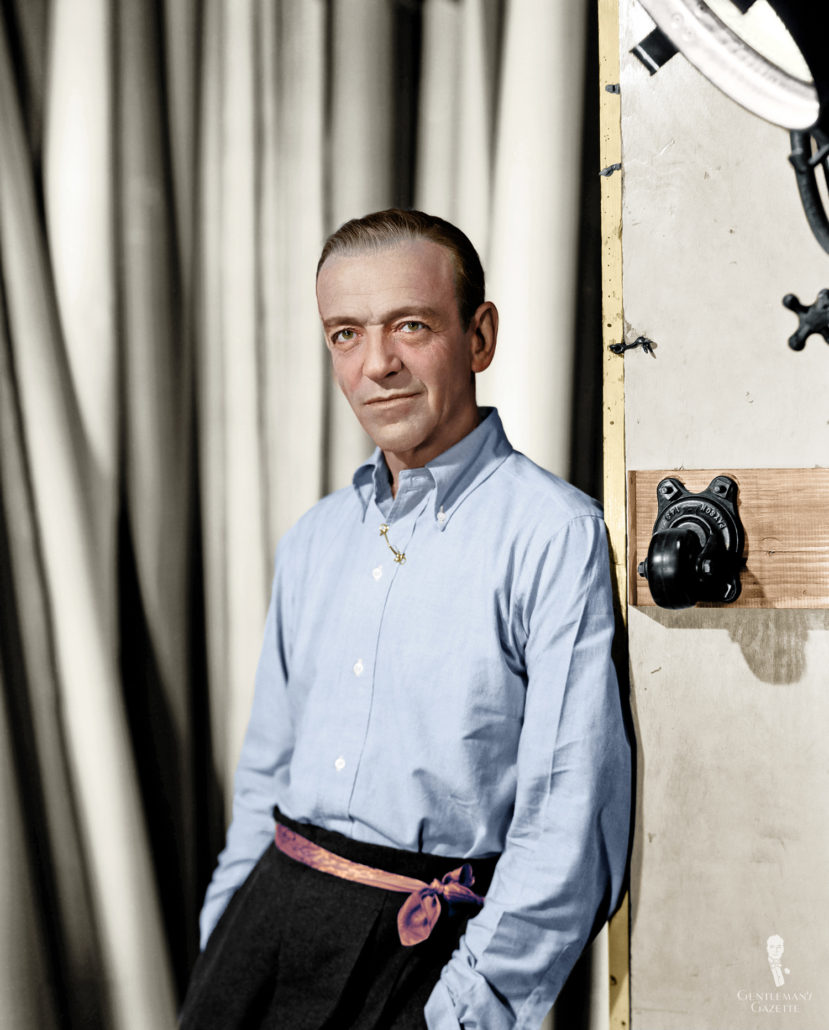
Fred Astaire with a tie belt and a slim cut dress shirt
As the name implies, this shirt fit is intended for slim people. If you’re not a marathon runner, you might want to consider one of the other fits for a more flattering look.
Dress Shirt Fit Option #3: Modern Fit
The modern fit falls in between the classic and the slim fit, providing the best of both worlds when it comes to comfort and style. A slightly tapered silhouette with the waist sometimes in combination with small back darts create a trimmer look than the classic fit that looks good even without a jacket without sacrificing comfort. The armholes are high, the sleeves have some room but are not too wide, and the yoke extends to or just past the shoulder bone.
This is my preferred shirt fit because I do not have to limit my range of movement, but I look slimmer than in a classic shirt. Even though I wear a jacket most of the time, I could even wear a shirt without a jacket. If you are not the slimmest guy, but you don’t have a huge belly, this fit suits you best.
Dress Shirt Fit Option #4: Super Slim/Skinny Fit
This super slim or skinny fit is mostly popular with young men who think that tighter is better. In practice, this fit is usually characterized by lots of wrinkles, and unless you have a very skinny body that justifies it, you should avoid it altogether. Skintight shirts are not a flattering alternative for anyone, and they restrict your range of movement considerably. If you are interested in classic men’s style, stay clear of this fit.
Shirt Style Details Explained
Style is very personal and subjective – even the details on a shirt. As such, this guide is meant to help you find the style elements that are best for you while highlighting the purpose or the traditions behind it.
Regardless of if you’re looking at an RTW, MTM or bespoke shirt, these guidelines apply to all of them.
Shirt Front: Pockets or No Pockets?
Aside from the shirt placket, most shirts feature a plain front without any additional elements other than chest pockets. Modern shirts sometimes feature darts or decorative stitching, but that’s not classic.
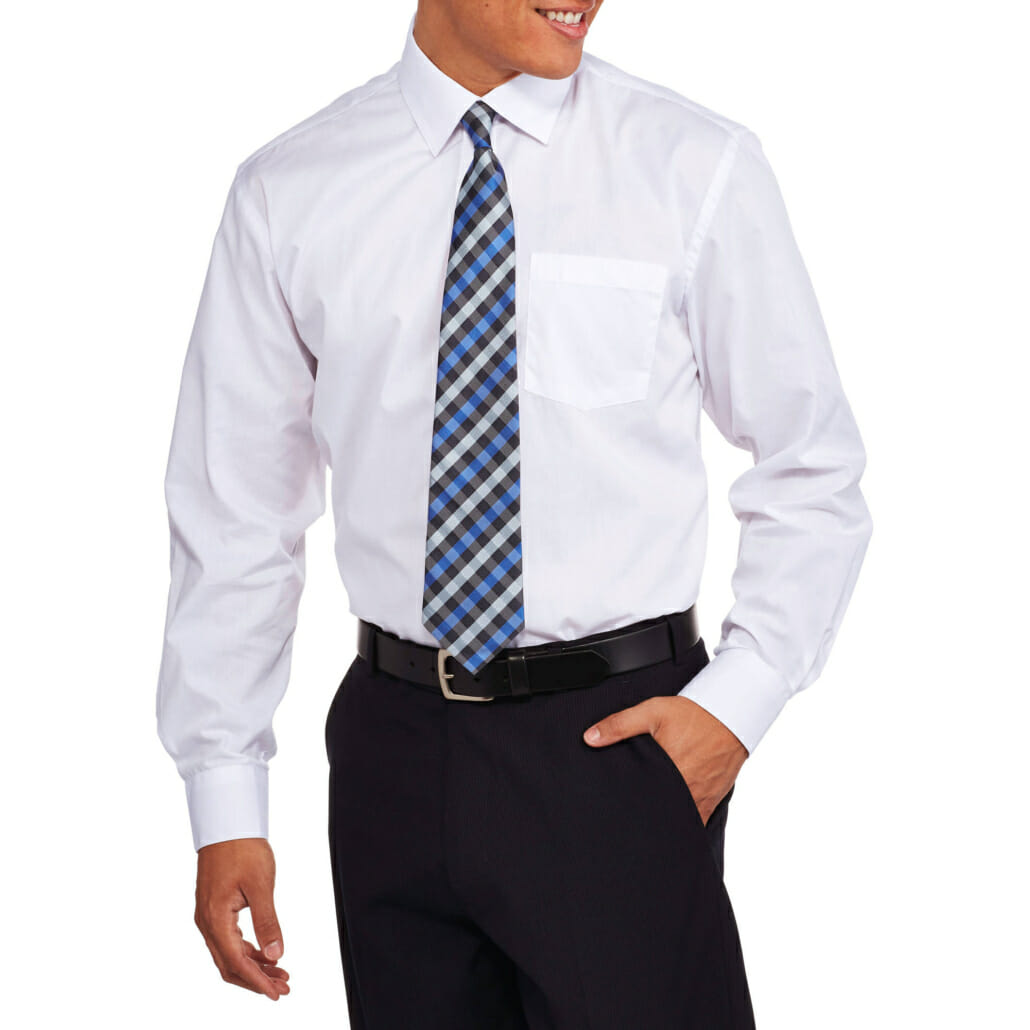
Shirt pockets are less formal
Some men like to have a shirt pocket; others don’t. Historically, a shirt with a pocket was always less formal than one without, because a gentleman wore jackets and would have had no use for a shirt pocket.
- No Pockets = Formal
- 1 Pocket = Informal
- 2 Pockets = Very Informal
On the other hand, someone engaged in physical labor used the pocket to store things while working. Today, it looks odd to have items or a pen clip to a chest pocket, as such it is more of a stylistic choice. As a rule of thumb, I never add them to formal shirts, but sometimes to more casual shirts.

Western shirt with two pockets for a casual look
A chest pocket on both sides is very casual and usually reserved for very informal shirts such as safari, military or western-style shirts.
Tuxedo & Evening Shirts for Special Occasions
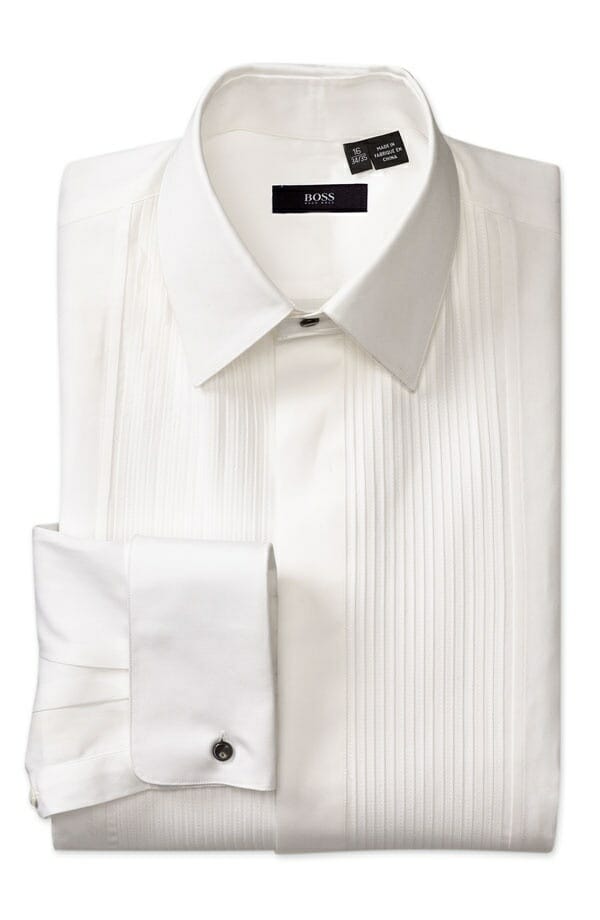
Hugo Boss Plise pleated bib tuxedo shirt with fly front
If you attend a black-tie event or even a white-tie gala, you should wear a designated evening shirt. A simple white collared shirt is NOT an adequate substitute for an evening shirt; it lacks the elegant details of a true evening shirt. Evening shirts, unlike regular dress shirts, should feature a bib-like contrast panel in the front. The contrasting fabrics on the bib are usually heavier and feature a pleated or pique effect.
Traditionally, black tie formal shirts feature a number of details:
- Constructed of white cotton in a solid or micropattern
- Soft turndown collar with a classic spread (not too wide)
- Pleated or pique/Marcella front bib
- Soft french cuffs
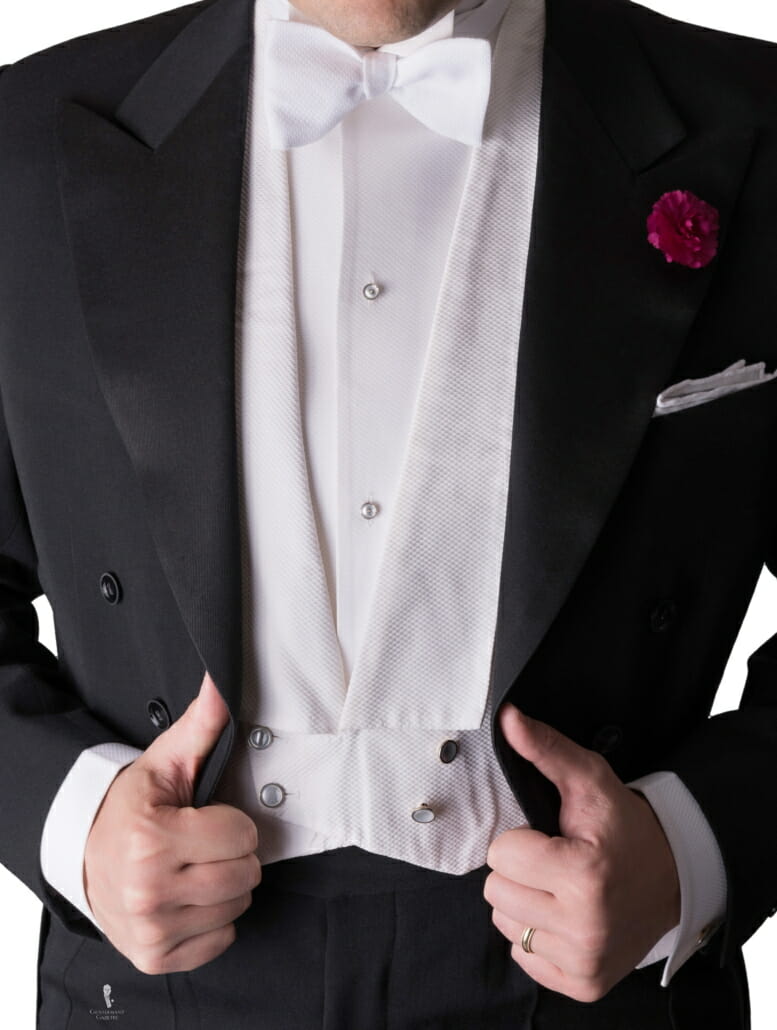
White Tie Evening Full Dress Waistcoat or Vest in Marcella Piqué
For white tie, you should wear a shirt with even more formal details:
- Detachable stiff collar
- Stiff single cuffs
- Marcella or stiff bib front
Shirt Plackets
The placket is one of the main elements of the shirt’s front because it automatically draws attention to itself due to its central position. Traditional dress shirts have a full placket that extends from collar to hem. Relaxed options such as a 3/4 placket are reserved for more casual shirts.
Traditional Placket
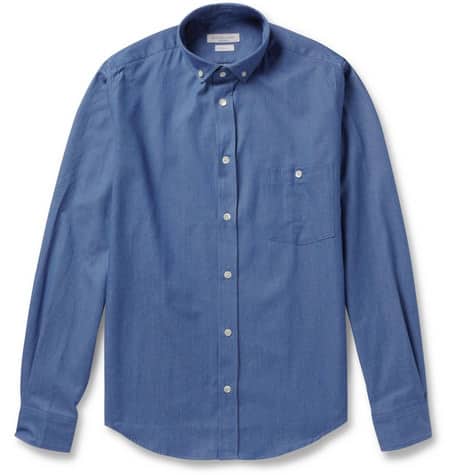
Traditional placket shirt
Also known as the “American placket” due to the strong influence and representation of American style, this is the most conventional style of all. It adds symmetry to a dress shirt, and it is basically, a separate piece of fabric attached to the shirt front. It can either be folded or stitched, and it is a popular option for everyday business shirts, but you can also find them on traditional American Oxford Cloth Button Down shirts.
French Placket
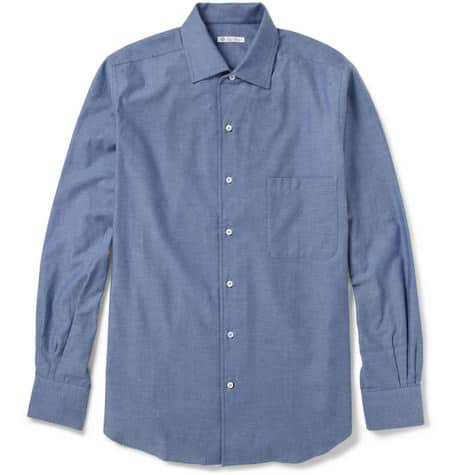
French placket shirt
The French placket is a more polished alternative than the traditional placket, and therefore it is the choice for evening shirts.
It is a very simplistic style that is achieved by folding the fabric over itself inwards. This technique results in a clean shirt front without any stitching. As the name implies, it is associated with a European aesthetic and the go-to choice for a more modern debonair look. Although traditionally more formal, the French placket can be worn with classic, fashion or casual shirts today.
Fly Front Placket
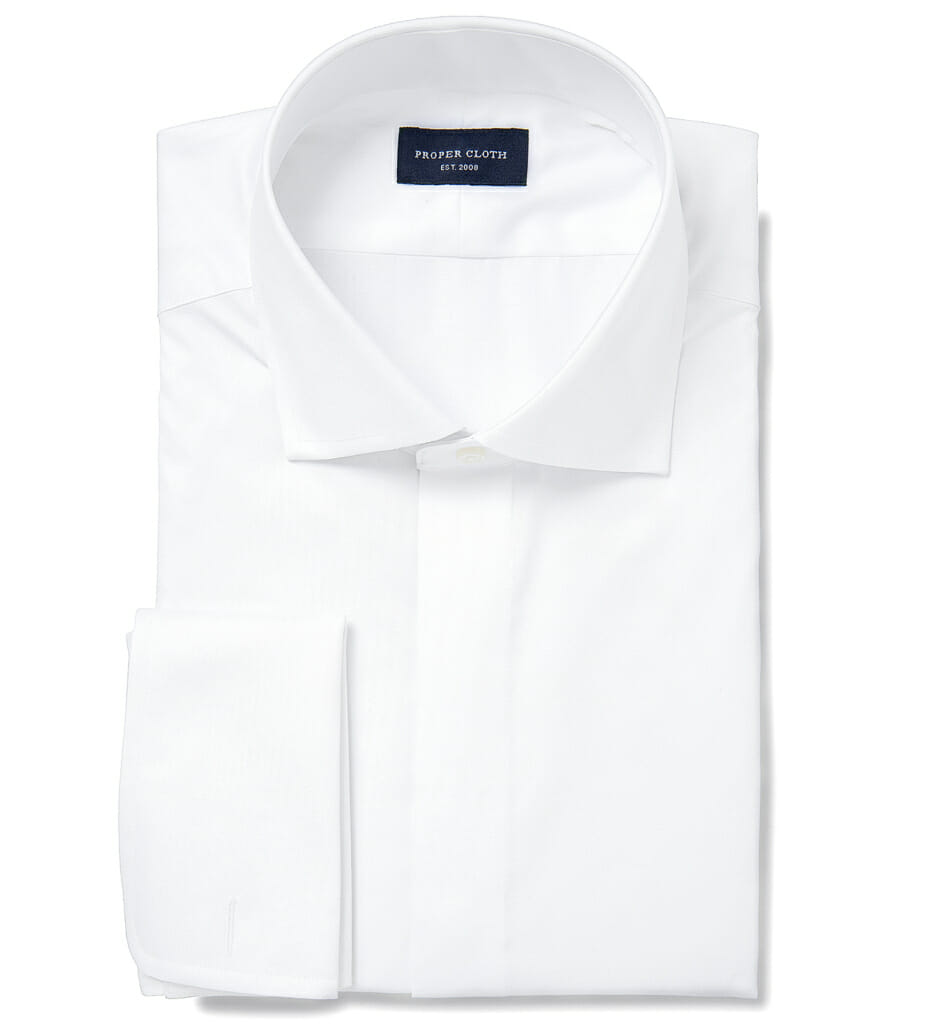
Fly front placket
Originally the fly front placket was a modern take on an evening shirt placket without any shirt studs. It features an extra flap of fabric which conceals the buttons thus providing a cleaner looking shirt. At the end of the day, it is still a poor man’s alternative to an evening shirt, and even though some fashion brands have utilized this placket in regular dress shirts, you better stay clear of it, if you want a timeless shirt wardrobe.
Back of the Shirt
Apart from pleats or darts, you don’t have to many functional options in the back. Shoulder or center back pleats help to guarantee a large range of movement in your arms, but some men also like them for the looks. , as they usually do not translate into considerable alterations on the shape of the shirt. Back darts, however, depending on their width, can produce a pronounced cinched effect on the waist that makes it slimmer and more contemporary. As with most details on the shirt, it all comes down to personal taste, although achieving a slim silhouette without resorting to back pleats might not be the easiest of tasks.
Back darts can help to achieve a trim silhouette and getting rid of excess fabric. They come in particularly handy for men with an hourglass shape such as body builders. As with most details on the shirt, it all comes down to personal taste.
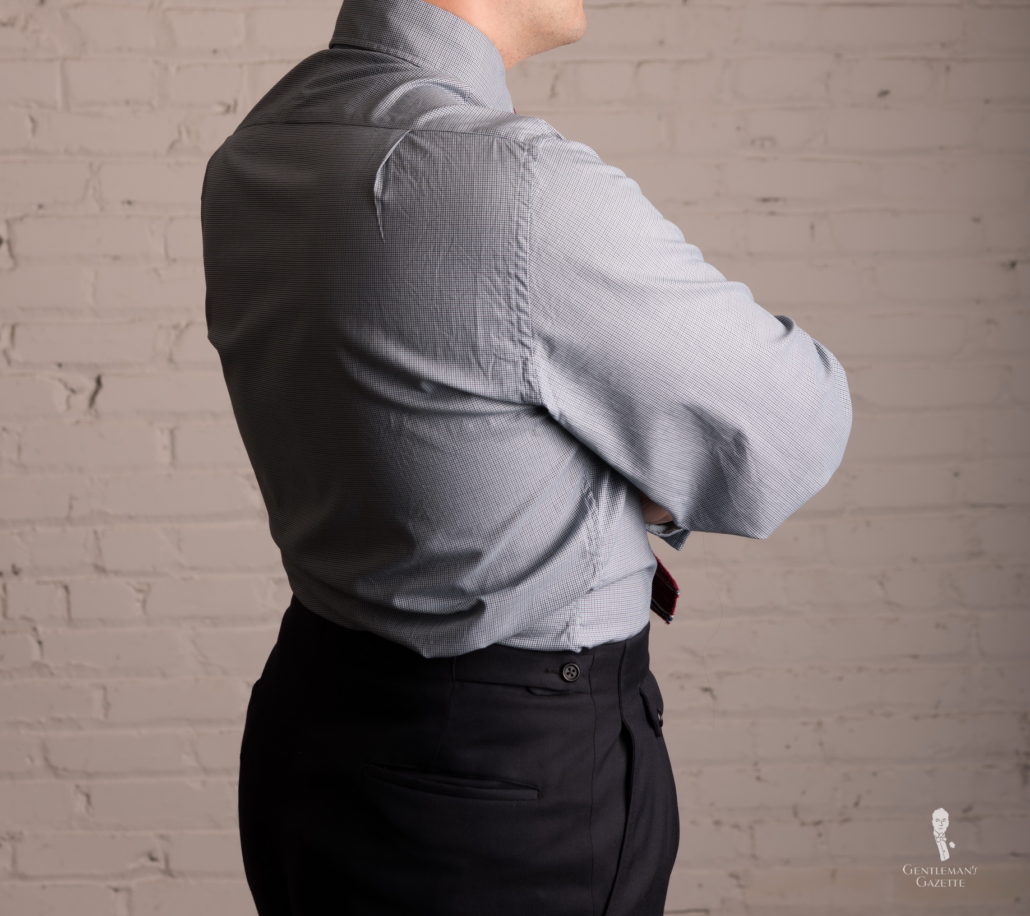
Side view with shoulder pleats
Today, most RTW shirts have a one piece yoke because it is less expensive than a split piece yoke. The latter can help to align patterns on the shoulder sleeve seam and on a bespoke shirt, it can be used to correct sloping shoulders. Apart from that it also looks dapper if stripes perfectly meet at an angle. To learn more about this, please check out $30 vs. $300 Dress Shirt.
Collar Options
The collar is arguably the core of the shirt as it is the most visible element of the garment. Chosen correctly, it should enhance your face and your look. While you can design a collar of your choice with bespoke shirts, even the RTW and MTM industry offers hundreds of different collar shapes. While the industry tries to come up with a naming convention for collars, a “medium spread collar” from one company may look very different than a medium spread collar from another. Therefore names have little meaning these days.
What used to consist of a “simple” choice of collar tip length or angle, and the desired amount of tie gap has now gotten a lot more complex due to curvy lines, button-down collars with extra roll, etc.
On top of that you can now choose the stitch distance from the edge, different versions of fused and non-fused interlining, as well as the collar height, you end up with unlimited options.
Seven Basic Collar Types
At the end of the day, you can break it down to 7 essential collars which are the basis of all others: spread, button-down, club, classic, tuxedo, Mao and the small collar.

Atte Ryknonen of “Dress Like a” wearing a British glen check pattern in an unstructured Italian jacket along with an American-style denim shirt.
A spread collar is by far the most popular contemporary model and a go-to choice for both casual and classic shirts. The beauty of it relies in the versatility, working perfectly with or without a tie, though when you do wear a tie it’s crucial to pick the right size knot to fit the wider gap.
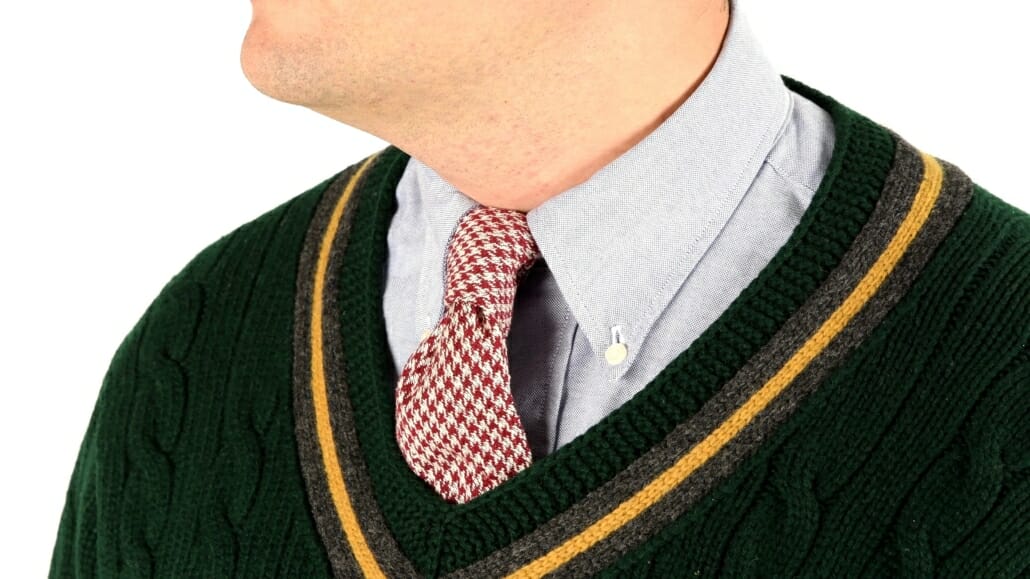
OCBD collar shirt with a green tennis sweater and a houndstooth tie
A button-down collar is an American, casual-cool classic shirt that we’ve written extensively about in our OCBD guide. Apart from a couple of exceptions, all my oxford shirts feature a button-down collar.
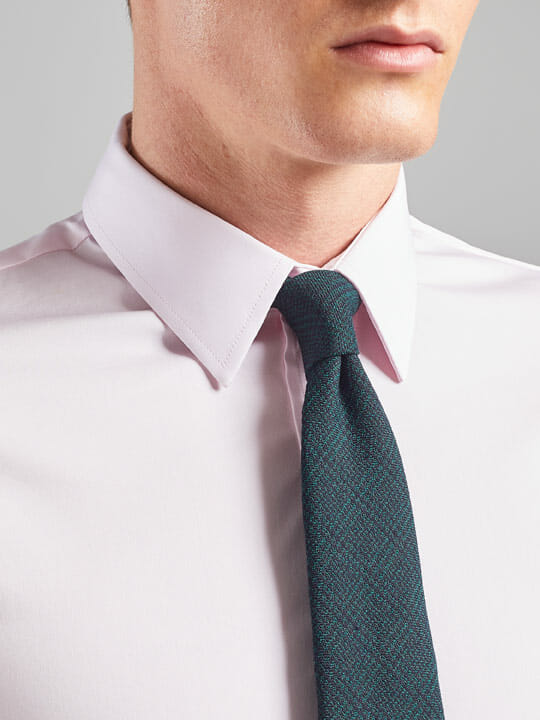
A classic point-collar shirt
A classic collar is the timeless pointed collar that is “just right.” It avoids all extremes in that it is neither too large, nor too small, nor is it too spread or too narrow. It offers the ideal tie gap for small- to mid-size tie knots, and it is a timeless and necessary part of every classic wardrobe.
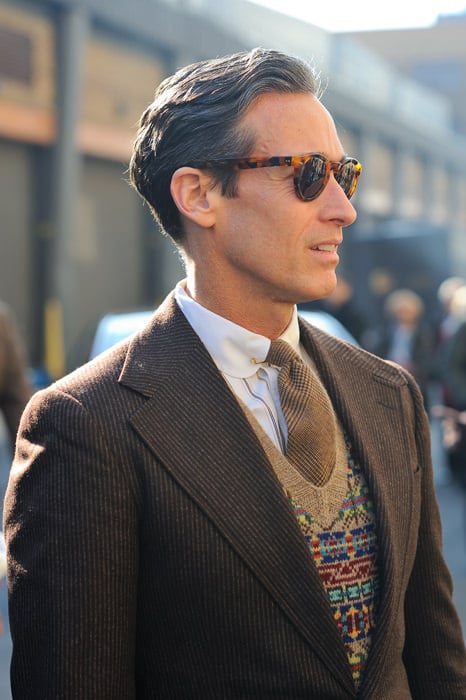
Monsieur Jerome – club collar
A club collar is a revivalist model with rounded corners that picks up the Mad Men/Boardwalk Empire aesthetic. A different spread can create a very different look and it looks great with a collar pin. You can buy them here.
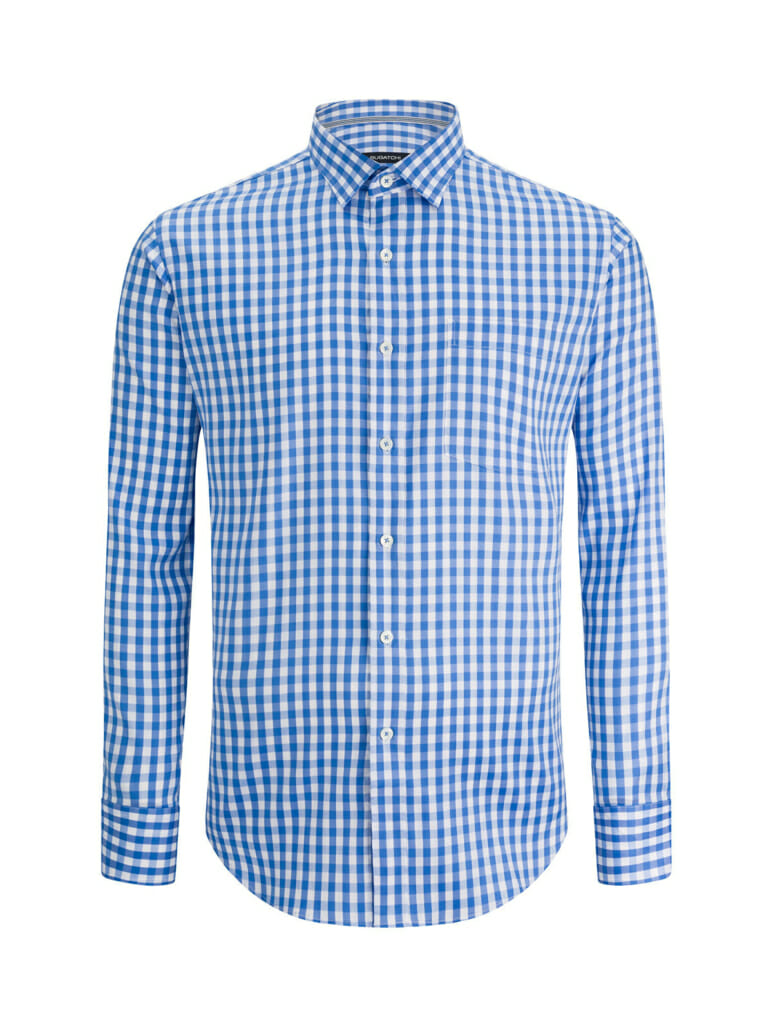
Small collar shirt
A small collar is a modern approach to the classic collar, this model seamlessly works with a variety of shirts from denim to oxfords and even contemporary classics, but it is often difficult to wear it with a tie or bow tie. If you like this look, it’s best to wear it without neckwear.
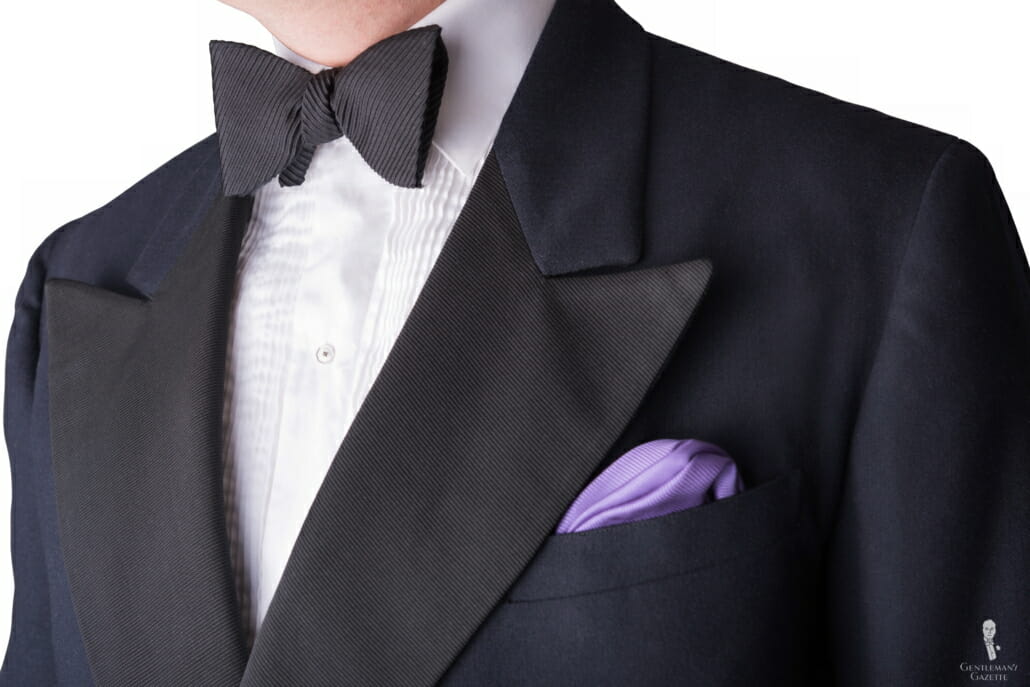
This midnight blue jacket features lapels faced in black grosgrain silk.
An evening collar was traditionally detachable, starched and stiff. Today, most tuxedo shirts feature an attached wing collar that is often too small and floppy. Either wear a turn-down collar with your tuxedo or go with a real detachable collar; for white tie, only wear a detachable collar.
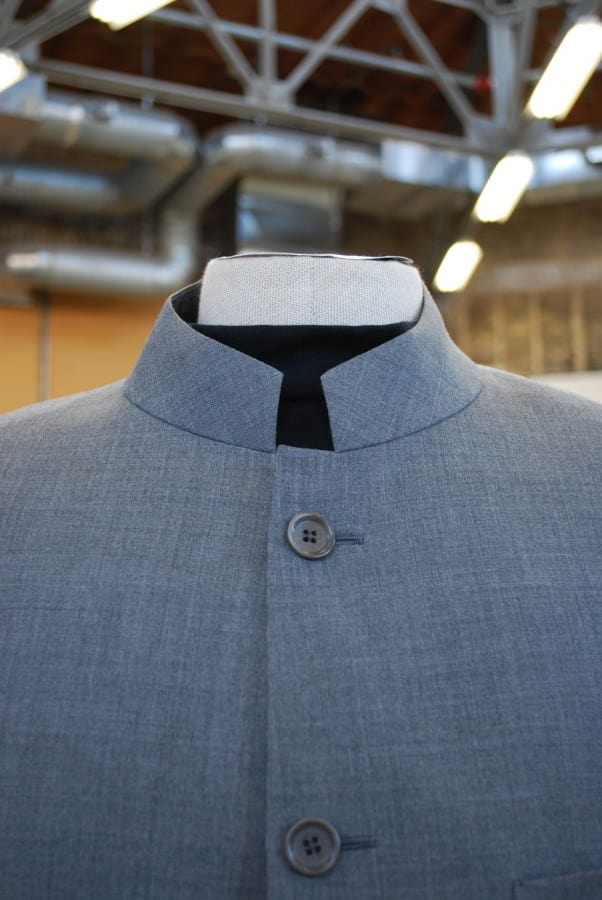
Stand-up Collar
A Mao collar is a standup collar is usually only worn in combination with a Nehru jacket, often by conductors or artists. Personally, I never wear it, but it is a distinct style.
To learn more about these collars, please watch the video at the top of this guide.
Shirt Cuff Styles: Cufflinks or Buttons
When it comes to cuff, the big question is, do you want barrel cuff with buttons or a French cuff for cufflinks?
French Cuffs
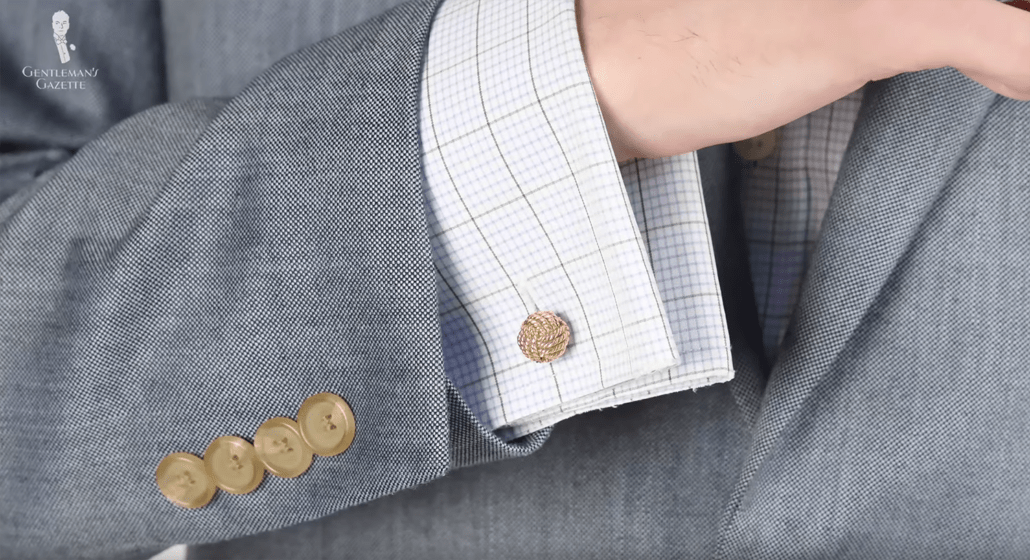
French Cuffs with Monkey Fist Knot Cufflinks from Fort Belvedere
Traditionally, French cuffs are dressier and more formal, allowing men to sport one of the quintessential pieces of jewelry in men’s style: cufflinks. Because this accessory makes a personal statement and expresses the wearer’s style, French cuffs have become quite popular in recent years, and they are not just reserved for formal shirts.
To top it off, believers in the Italian Sprezzatura have found used these cuff to break conventional rules, by wearing them unfastened and often folded back over the jacket sleeve. If you wear formal outfits such as a 3-piece suit or a tuxedo, cufflinks are a must-have accessory!
Barrel Cuffs
Barrel cuffs, on the other hand, are the everyday choice for most men and the most commonly found alternative. With a variety of shapes and designs, ranging from faceted, rounded, straight, etc. up to the number of buttons, barrel cuffs provide a wide range of choices to the wearer, with a much more practical approach than their French counterparts. One critical aspect to bear in mind when considering the type of cuff to choose is its height: traditional (outdated) cuffs usually sit between 7.5/8cm, whereas contemporary classic cuffs are about 6 cm and anything less is on the more fashionable side.
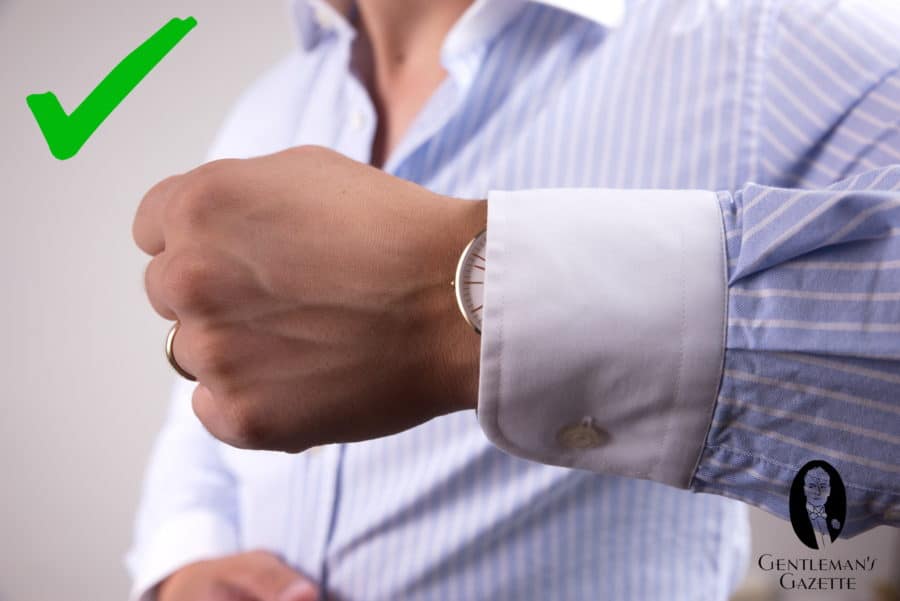
Proper barrel cuff fit with a watch
Personally, I wear cufflinks about 75% of the time. I try to avoid them when wearing very casual ensembles and when it is very hot because the double layer of fabric covering your wrists makes you feel hotter in warmer climates.
Although cuffs are a crucial component on their own, they should harmonize with the collar. Depending on what combination of cuffs and collar you choose, the feel of the shirt may be anything from fashion-forward, relaxed, classic to even formal. Overall, there are probably hundreds of variations with one, two or three buttons or a mix of cuff shapes like the James Bond Cuff.
Sleeve Length
If you wear a lot of jackets with shirts from different manufacturers or tailors, you’ll notice that the shirt sleeve length and the amount of cuff you show varies depending on the cut of the armholes of the shirt and the jacket. To prevent that, you can have 6 or 8 buttonholes instead of the usual 4 on a French cuff, so you can easily adjust the shirt length to the jacket. In England, they sometimes come with 6 buttonholes by default and it can be a very useful feature indeed. To learn more about this issue, and how to solve it, please watch this video.
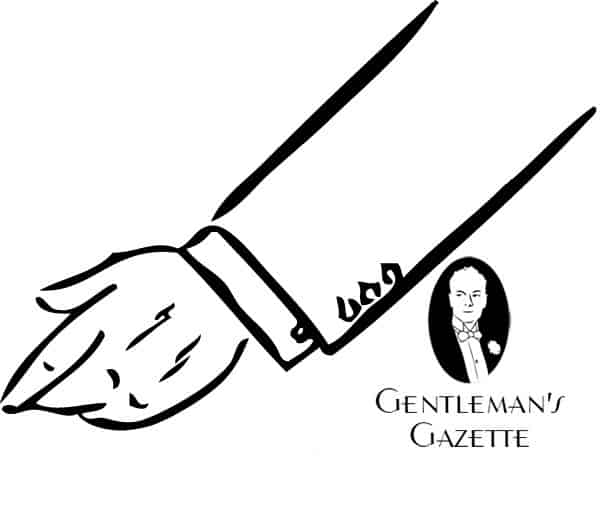
Correct Sleeve Length
The Shirt Hem
The bottom hem can also say much about a shirt’s style, namely if it leans toward the more classic or relaxed end of the spectrum.

An untucked dress shirt looks downright sloppy
Classic Hem
A classic dress shirt is worn tucked in. Therefore the tail and front hems are longer than the sides, so it doesn’t come untucked during the day. Unfortunately, many RTW shirts today are cut shorter because it helps to reduce the amount of fabric used. Although tails have gotten shorter in recent years, the design must still ensure the functional aspect, which makes the ratio between the lower and higher ends of the tail a critical variable.

Untuckit has made a name producing shirts with a straight hem to wear untucked
Straight Hem
If you are looking for a casual shirt that you can wear untucked on a more relaxed occasion, straight hems are the way to go. Unlike the tail-shaped version, straight hems make the shirt much more prone to becoming untucked on its own as a result of natural body movements, so caution is advised when choosing the length: too short will look disproportional, whereas too long will just look ridiculous if worn untucked.
Contrasting Shirt Elements
With the rise of online MTM shirts, many brands are offering men the opportunity to add contrasting collar undersides, shirt plackets, buttonholes or cuff linings to their custom shirts. Since most OTR shirts do not have these loud customizations, it’s become another way to show off one’s custom clothing, much like working surgeon’s cuffs were 10 years ago.
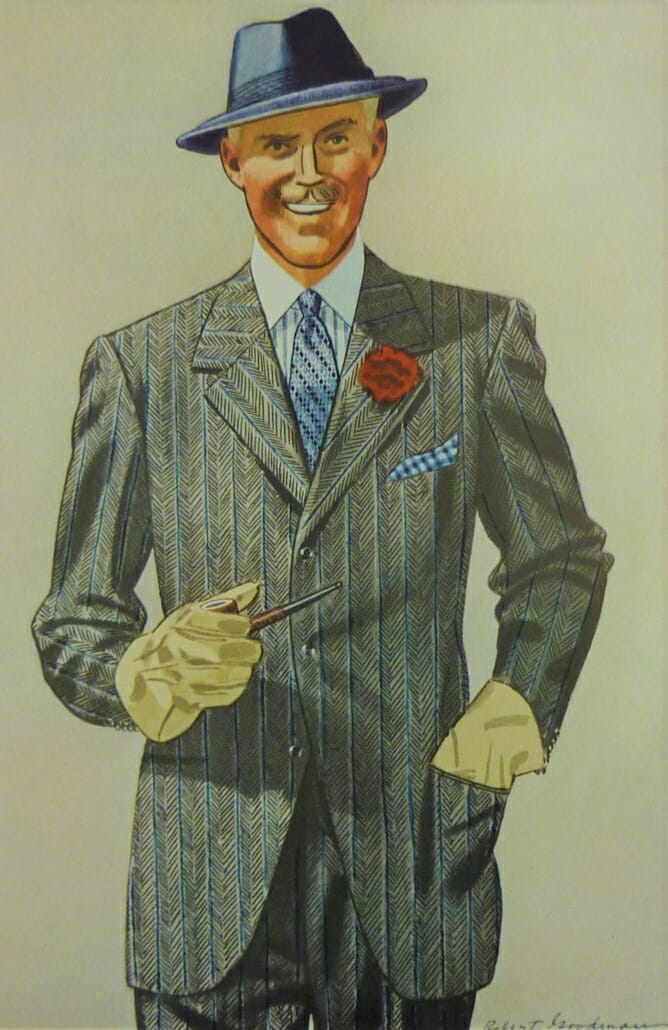
Vintage fashion illustration from Esquire, may 1938 – Note the striped patterns in the shirt, jacket, and tie.
These details are flashy, so they should be used wisely and sparingly. They can elevate a casual shirt to a new standard, but the second you go overboard it will be too attention-grabbing. Contrasting elements work best when used with subtlety. There is one detail we wholeheartedly recommend: white cuffs and collars on a contrasting shirt color.
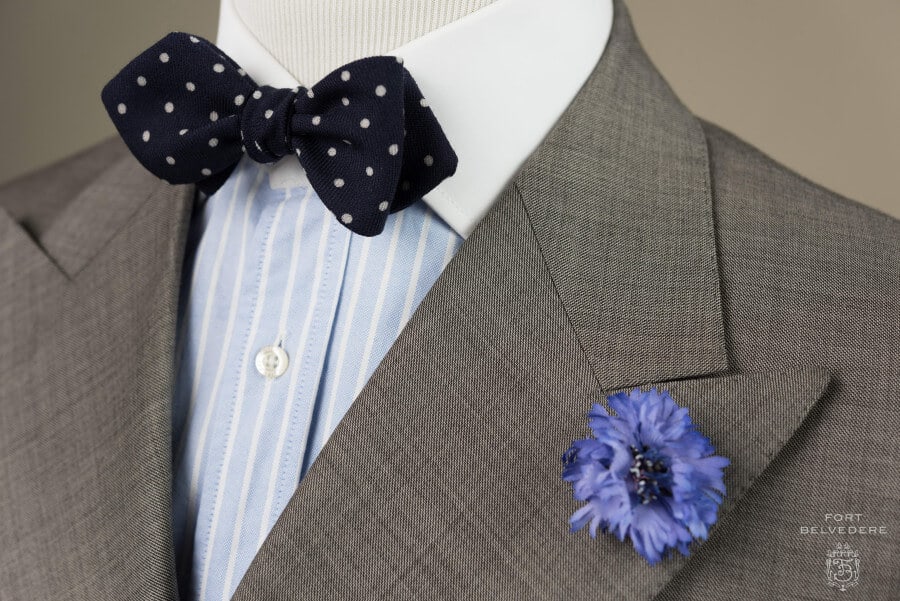
Winchester shirt with Wool Challis Navy Bow Tie with White Polka dots paired with Blue Cornflower Boutonniere Buttonhole Flower Silk – handmade by Fort Belvedere
White Collars & Cuffs Are Classic
A classic in menswear is the contrasting white collar and/or white cuffs. It elevates a shirts formality and makes it more business appropriate. Avoid using other contrast colors or patterns together with this combination, as the look is strong enough on it’s own.
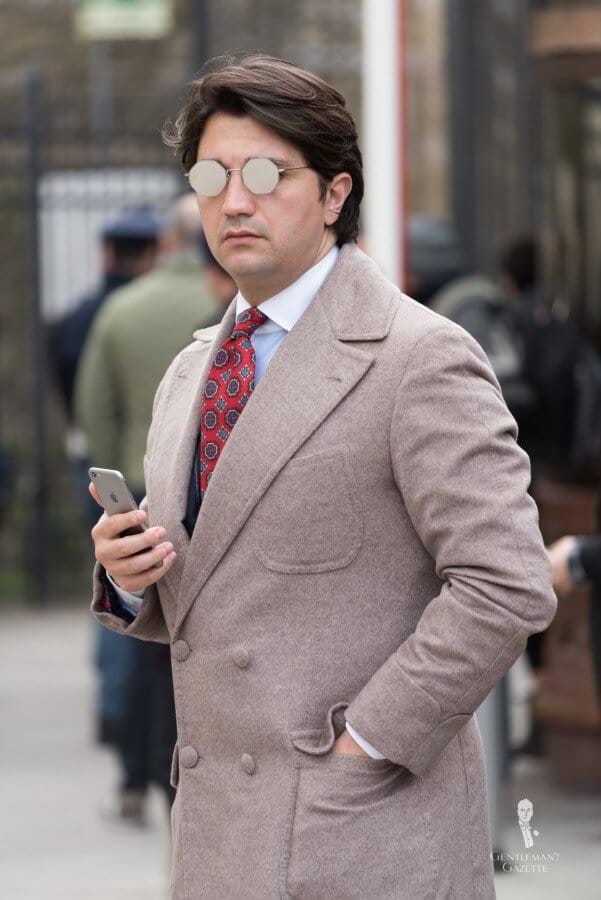
Light brown overcoat with patch pockets with covered cloth buttons, Winchester shirt with barrel cuffs and blue rope striped suit
Conclusion
As you can see, the look and feel of a shirt are not just defined by your choice of fabric and the details alone but also heavily by the style choices you make.
If you buy off the rack, all of these choices have been made for you, which is easy but at the same time limiting. Once you switch to a custom shirt, you have to carefully consider all the options, so everything works together once you get the shirt back.
What styles or components do you look for when purchasing a shirt? Please let us know in the comments below.
from Gentleman's Gazette https://ift.tt/2iRMgrP
- Get link
- X
- Other Apps
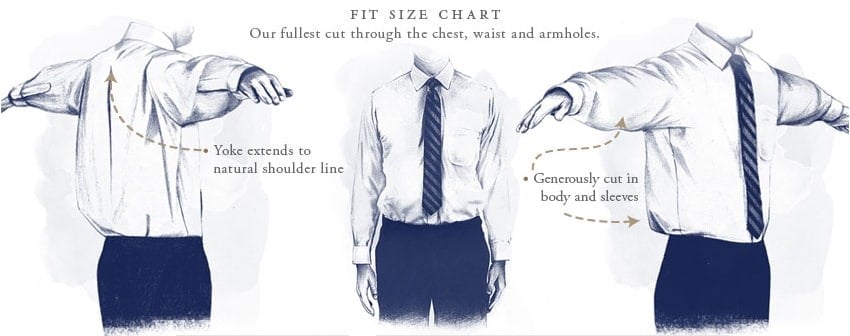
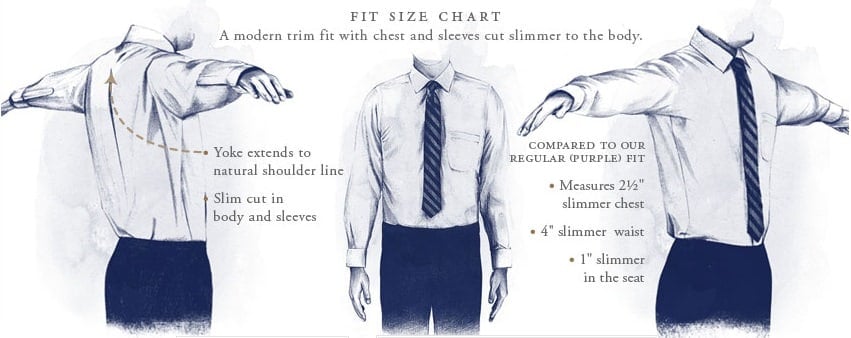
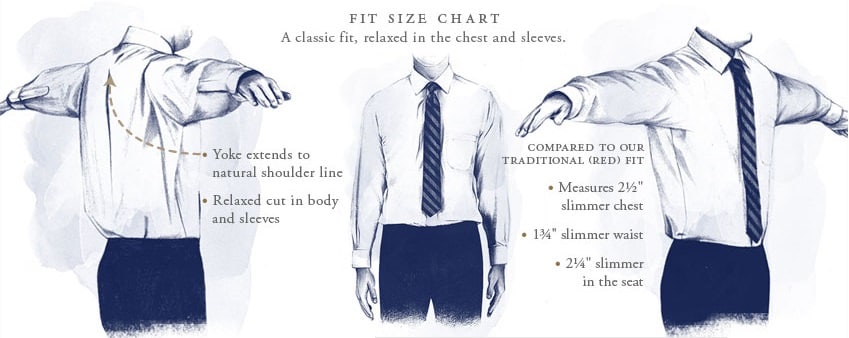
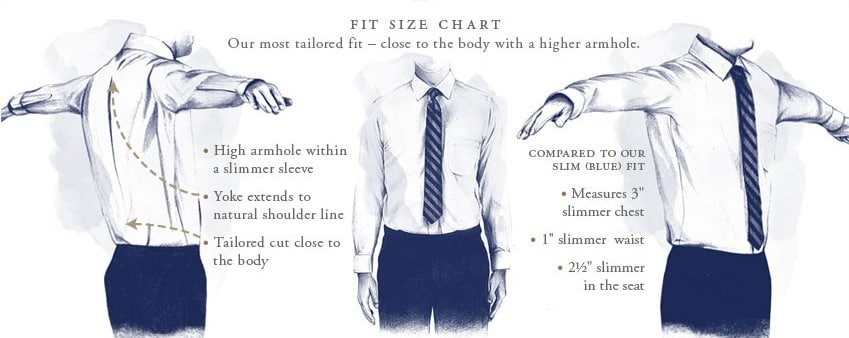
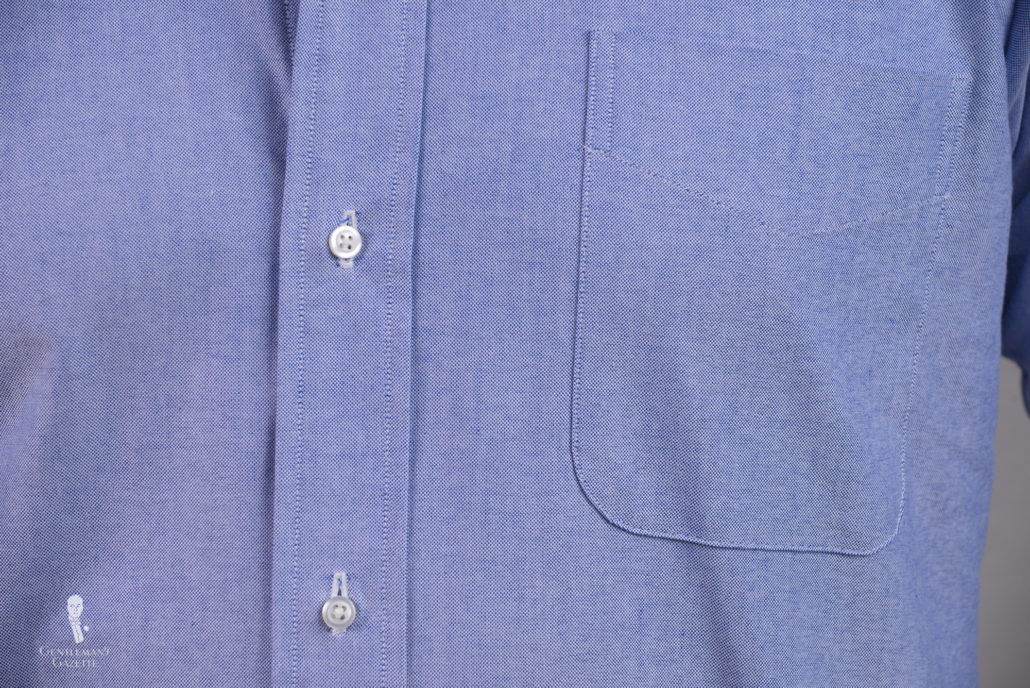
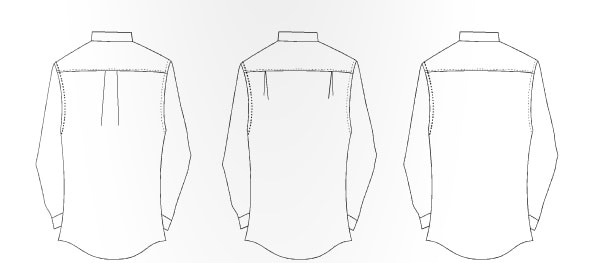
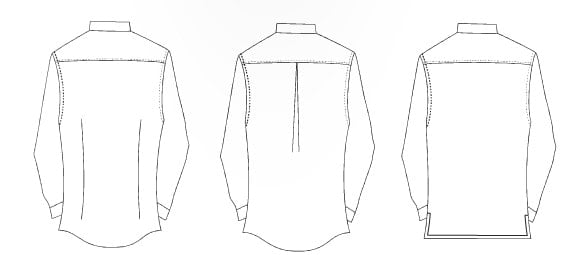
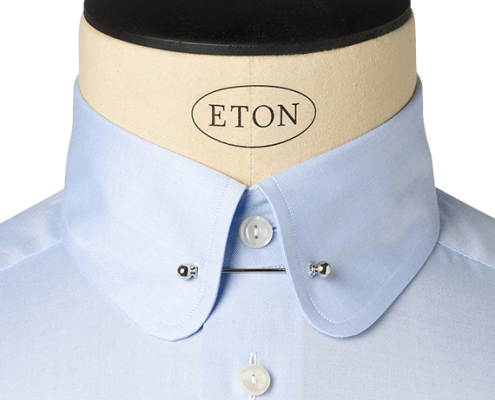
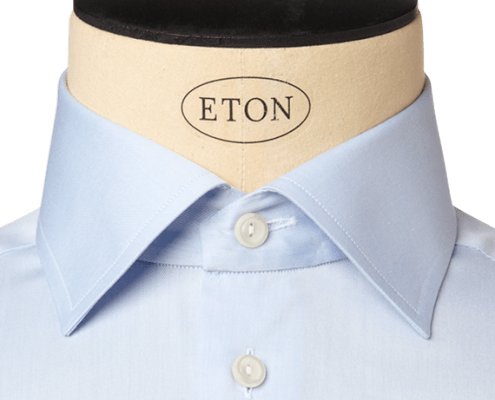
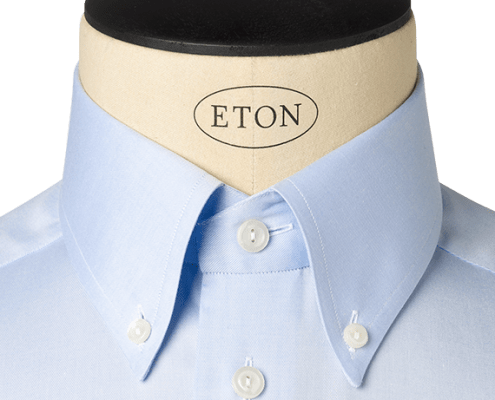
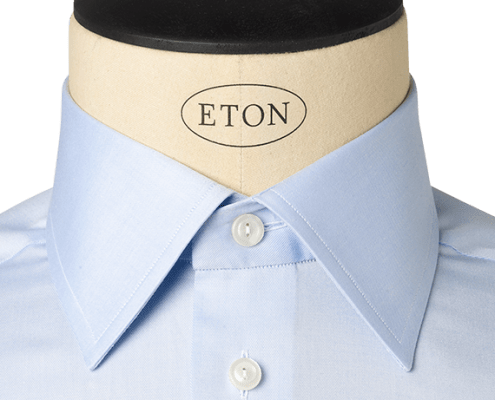
Comments
Post a Comment
thanks for your feedback